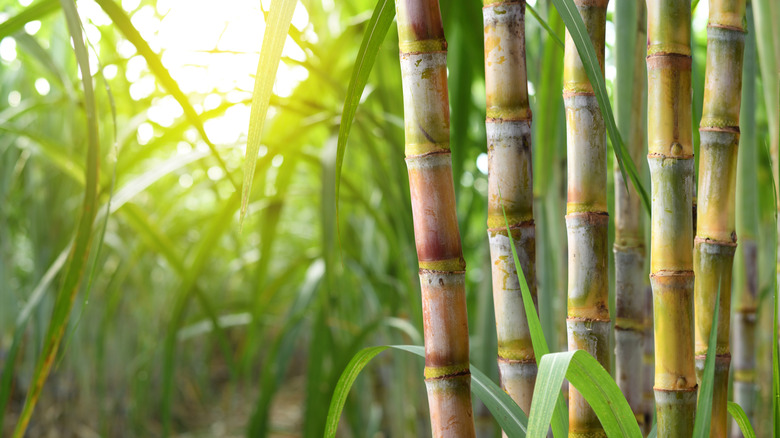The World's Most Widely Produced Food Item Isn't What You'd Expect
If you ask someone what the most mass-produced food item in the world is, you may get responses that lean toward heavy hitters like wheat, rice, and maybe even potatoes, but the hard data says otherwise. A 2021 global agriculture data report by Statista showed the top spot actually goes to sugarcane – far more tons are harvested annually than any other crop.
Given such staggering figures, it's surprising that this isn't common knowledge. You'd think that it would be everywhere due to the sheer numbers alone, so what's the catch? Well, there are all different kinds of sugar, but for this ingredient, it seldom appears in its raw form at mealtime; instead, its versatility allows it to quietly power our food supply, sweeteners, biofuels, and more.
Sugarcane production dwarfs many staple crops, as it contributes to around 21% of total crop output by weight globally. Corn is the second-most produced, followed by wheat and paddy rice, each indispensable as food staples and feed in many countries. What makes sugarcane so dominant is not just its biomass; it's also an incredibly high-yielding crop per area in tropical and subtropical climates, where much of the world harvests it.
Sugarcane tops the list, and here's what that means
Sugarcane is a big deal for several reasons, the first of which is its agricultural advantages. It tolerates heavy rainfall and can produce large quantities of biomass per acre. By comparison, crops like corn, wheat, and rice are more directly consumed as popular mainstays. Corn (maize) often serves double duty by feeding people and animals, and contributing to biofuels and industrial uses. Wheat and rice feed billions every day, but harvesting is slow and labor-intensive, and there's also the issue of post-harvest challenges that can cause significant loss due to various factors like harvesting at the wrong moisture content level, crop damage, and a lack of sufficient equipment.
Another angle is how sugarcane's output connects to global trade, economics, and, by proximity, diet. Even if many people don't eat sugarcane raw, the sugar, molasses, cane sugar with its golden hue, and derivatives go into countless products — sweeteners, soft drinks, baking, candy, and more. Its dominance in tonnage reflects not only how much is grown, but how integrated it is in industrial food systems.
For crops like corn, we can see them readily in cereals or even good old-fashioned corn on the cob. While rice and wheat crops will most certainly be what most people think about when it comes to "global food," sugarcane is the under-the-radar giant. It's everywhere in production, impact, and weight — just not always in ways we taste directly.


